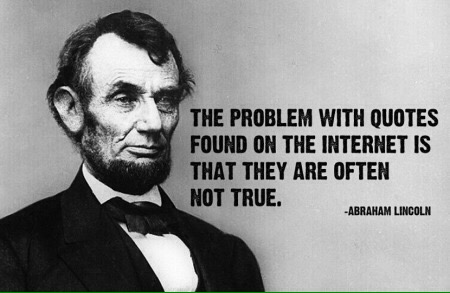Imitation Is The Sincerest Form Of Flattery
I’ll bet you have no idea who said it. It’s often used to justify everything from copyright infringement to plagerism.
Charles Caleb Colton’s very name seems to identify him as a writer, with its alliterative cadence. In 1824 he published a work called “Lacon, Or, Many Things In a Few Words: Addressed to Those who Think.” His most famous quote comes from that almost 200 year old work. Although, he expresses it “Imitation is the sincerest of flattery.”
Is it true? In the age of the Internet, is imitation even allowed? Encouraged? I have two friends who are actively working to combat plagerism in their own areas.
Steve Hofstetter
Steve Hofstetter is a professional stand up comedian. He has helped organize a group called “Comedians against Plagerism.” You might not think that plagerism is a big deal in comedy. Doesn’t everyone retell jokes? If you think about it, how many original jokes have you thought up in your life? More likely, you’ve heard a comedian, or read a meme on Facebook that was funny and then you’ve retold, or reshared the meme. In fact, you might wonder why on earth anyone would have a problem with that.
David Farland
Dave is a New York Times bestselling author. He wrote the Runelord series among many other books. Dave is working with an author who had her book copied and republished under someone else’s name. Both the author and the plagerist are not full time authors. They, like most writers, and most comedians, for that matter, are hobbiests doing what they love.
So, who cares? Shouldn’t these people simply be happy that their work is being seen by a wider audience? If we didn’t know that the Mona Lisa was painted by Davinci, would it be any less of a masterpiece? And what about that whole “imitation” quote from Charles Caleb Colton?
The interent is a wonderful tool. It allows authors and content creators to share their work in ways that could never be imagined a generation ago. But, the downside is that the ease of sharing also makes it simple to share someone else’s work. And the internet is all about content, less so about authorship.
Apple vs Microsoft
Back in the 1990’s Microsoft dramatically changed the look and feel of the Windows interface. The new interface looked a lot like another operating system: Apple’s. Apple sued Microsoft for $3B or some huge amount. This court case affected me because I was trying to go from WordPerfect to Microsoft and WordPerfect threatened to sue me if I went to work before a six month non-compete period. Microsoft felt the non-compete was probably illegal, but they were in the middle of the Apple lawsuit and didn’t want to start another one.
Apple had a good case. The Windows layout was a near exact copy of the Apple desktop. Apple used their desktop look and feel as a selling point for their products. Microsoft’s earlier interface by contrast was pretty clunky and frankly it was ugly. Windows 95 was beautiful.
The trial went on for months. Eventually, the courts sided with Apple. They won the lawsuit. The court agreed that “Yes, Microsoft clearly had used Apple’s look and feel as the basis for their Windows interface.” After the trial, damages were awarded. And because it was an anti-trust case those damages were tripled.
Three dollars.
The courts awarded Apple three dollars as compensation for Microsoft stealing the look and feel of their desktop. But, why? If Microsoft stole the look and feel from Apple, why wasn’t Apple entitled to more compensation? Because, Microsoft took an idea and then built it.
Howard Tayler
I have a good friend, Howard Tayler, who created Schlock Mercenary, an online comic strip about a group of futuristic mercenaries. He has no reservations about sharing ideas for his story.
Aren’t you worried about someone stealing your idea?
The idea isn’t what’s valuable. The work to bring the idea to fruition is what is valuable.
Microsoft took an idea and then built a completely different (and at the Windows 95 stage) not as good, platform. You could go to the Louvre and base a painting on the Mona Lisa and not be quilty of plagerism, copyright infringement, stealing or anything else.
So, what’s the difference between Microsoft and the cases that my friends Steve Hofstetter and Dave Farland are working on? The difference is that plagerism is the actual copying of someone else’s work. When you simply copy someone’s work and don’t give them credit you are actually robbing the artist.
When you take someone else’s words and put them on a meme and send the meme out to the internet, you’ve done more than simply copy an idea. You’ve taken the actual product that was created and reused it without permission. None of us would think of walking into an artist’s gallery and, taking one of the pictures off the wall and walking out with it. Of course not.
I like paintings of Jesus Christ. I have prints of several of them in my house. Obviously, each one is unique. No pictures exist of Jesus, of course. Each artist uses his own imagination and inspiration. They are all using the same idea, but creating different works of art.
Making the picture, is of course, completely okay. No one has a copyright on “Pictures of Jesus.” But, physically copying one of the existing works would be robbing that artist of the rewards due him for his work.
Imitation might be the most sincere form of flattery, but don’t mistake copying an idea with copying a work of art.
Rodney M Bliss is an author, columnist and IT Consultant. His blog updates every weekday. He lives in Pleasant Grove, UT with his lovely wife, thirteen children and grandchildren.
Follow him on
Twitter (@rodneymbliss)
Facebook (www.facebook.com/rbliss)
LinkedIn (www.LinkedIn.com/in/rbliss)
or email him at rbliss at msn dot com(c) 2016 Rodney M Bliss, all rights reserved

